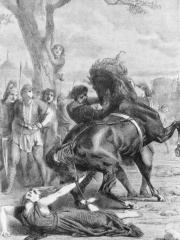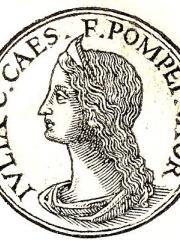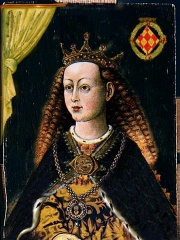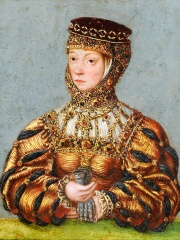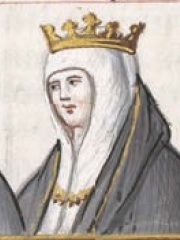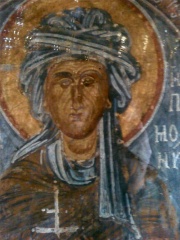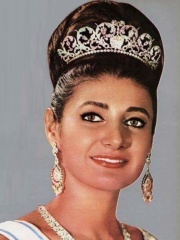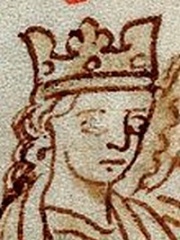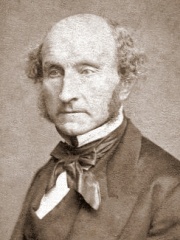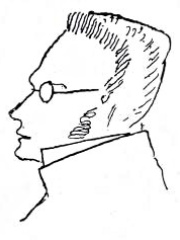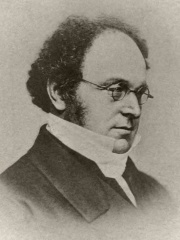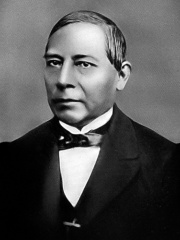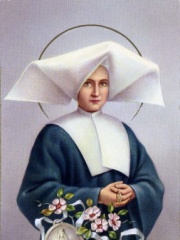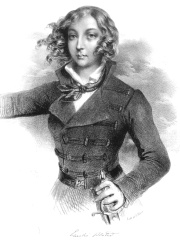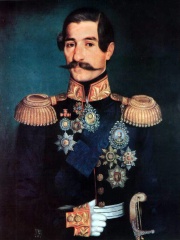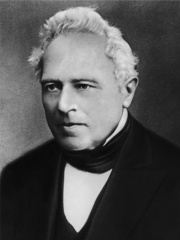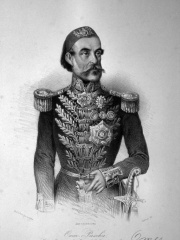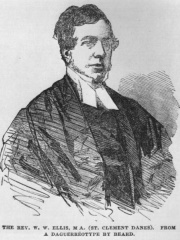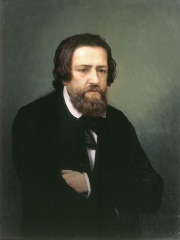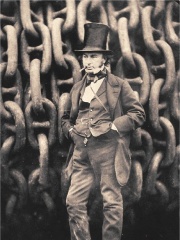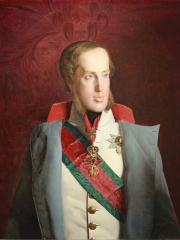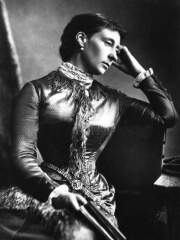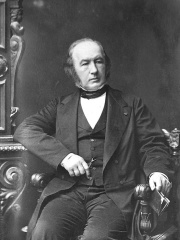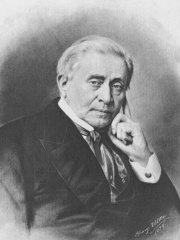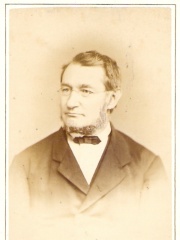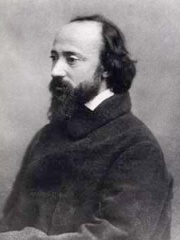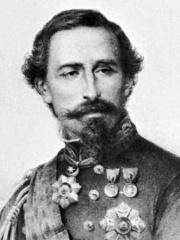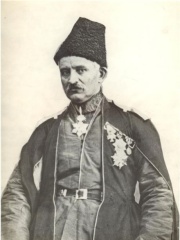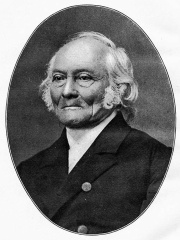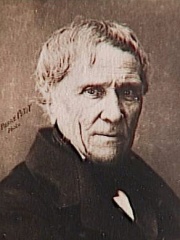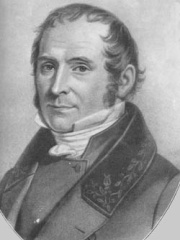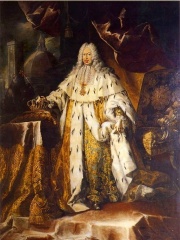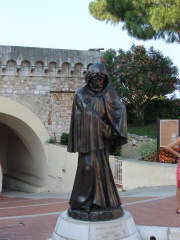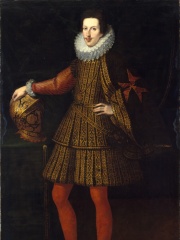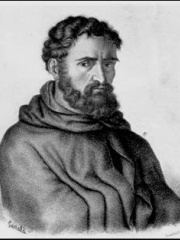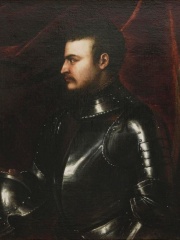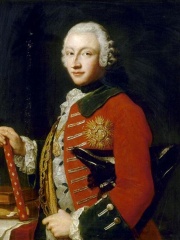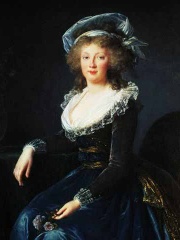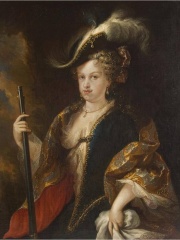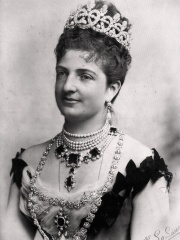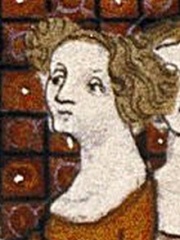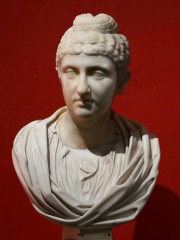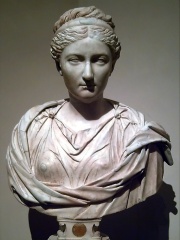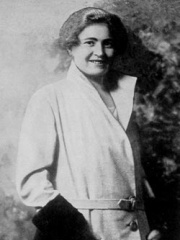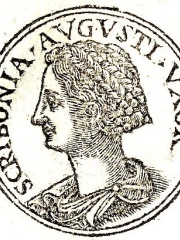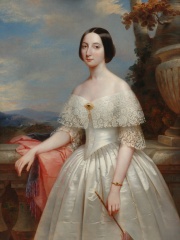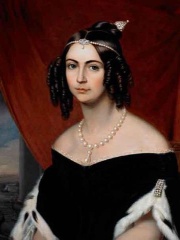COMPANION
Maria Christina of the Two Sicilies
1806 - 1878
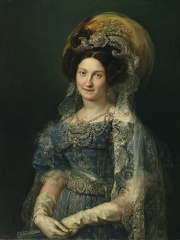
 Maria Christina of the Two Sicilies
Maria Christina of the Two Sicilies
Maria Christina of the Two Sicilies (Italian: Maria Cristina Ferdinanda di Borbone, Principessa delle Due Sicilie, Spanish: María Cristina de Borbón, Princesa de las Dos Sicilias; 27 April 1806 – 22 August 1878) was the queen consort of Spain from 1829 to 1833 and queen regent of the kingdom from 1833, when her daughter became queen at age two, to 1840. Read more on Wikipedia
Since 2007, the English Wikipedia page of Maria Christina of the Two Sicilies has received more than 428,177 page views. Her biography is available in 43 different languages on Wikipedia (up from 42 in 2019). Maria Christina of the Two Sicilies is the 176th most popular companion (down from 173rd in 2019), the 850th most popular biography from Italy (down from 846th in 2019) and the 19th most popular Italian Companion.
Maria Christina of the Two Sicilies was the last Queen of the Two Sicilies. She was the daughter of King Francis I of the Two Sicilies and Maria Isabella of Spain. She became queen in 1832 after her father's death. She was the last of the Bourbon monarchs in Italy. She was deposed in 1860 by Garibaldi and the Kingdom of the Two Sicilies became the Kingdom of Italy.
Memorability Metrics
430k
Page Views (PV)
64.33
Historical Popularity Index (HPI)
43
Languages Editions (L)
4.98
Effective Languages (L*)
3.59
Coefficient of Variation (CV)
Page views of Maria Christina of the Two Sicilies by language
Over the past year Maria Christina of the Two Sicilies has had the most page views in the Spanish wikipedia edition with 136,742 views, followed by English (71,651), and French (10,876). In terms of yearly growth of page views the top 3 wikpedia editions are German (233.49%), Latin (60.95%), and Serbo-Croatian (42.41%)
Among COMPANIONS
Among companions, Maria Christina of the Two Sicilies ranks 176 out of 784. Before her are Rosalynn Carter, Brunhilda of Austrasia, Julia, Isabella of Angoulême, Wahshi ibn Harb, and Barbara Radziwiłł. After her are Isabella of Portugal, Queen of Castile, Helena Dragaš, Royal Noble Consort Huibin Jang, Shahnaz Pahlavi, Eleanor of Provence, and Hoelun.
Most Popular Companions in Wikipedia
Go to all RankingsRosalynn Carter
1927 - 2023
HPI: 64.50
Rank: 170
Brunhilda of Austrasia
543 - 613
HPI: 64.50
Rank: 171
Julia
76 BC - 54 BC
HPI: 64.42
Rank: 172
Isabella of Angoulême
1188 - 1246
HPI: 64.40
Rank: 173
Wahshi ibn Harb
700 - 660
HPI: 64.40
Rank: 174
Barbara Radziwiłł
1520 - 1551
HPI: 64.38
Rank: 175
Maria Christina of the Two Sicilies
1806 - 1878
HPI: 64.33
Rank: 176
Isabella of Portugal, Queen of Castile
1428 - 1496
HPI: 64.27
Rank: 177
Helena Dragaš
1372 - 1450
HPI: 64.13
Rank: 178
Royal Noble Consort Huibin Jang
1659 - 1701
HPI: 64.04
Rank: 179
Shahnaz Pahlavi
1940 - Present
HPI: 63.98
Rank: 180
Eleanor of Provence
1223 - 1291
HPI: 63.90
Rank: 181
Hoelun
1140 - 1208
HPI: 63.90
Rank: 182
Contemporaries
Among people born in 1806, Maria Christina of the Two Sicilies ranks 7. Before her are John Stuart Mill, Max Stirner, Augustus De Morgan, Benito Juárez, Catherine Labouré, and Emilia Plater. After her are Alexander Karađorđević, Prince of Serbia, Otto Wilhelm Hermann von Abich, Omar Pasha, William Webb Ellis, Alexander Andreyevich Ivanov, and Isambard Kingdom Brunel. Among people deceased in 1878, Maria Christina of the Two Sicilies ranks 9. Before her are Archduke Franz Karl of Austria, Princess Alice of the United Kingdom, Claude Bernard, Joseph Henry, Julius von Mayer, and Charles-François Daubigny. After her are George V of Hanover, Alfonso Ferrero La Marmora, Mirza Fatali Akhundov, Ernst Heinrich Weber, Antoine César Becquerel, and Elias Magnus Fries.
Others Born in 1806
Go to all RankingsJohn Stuart Mill
ECONOMIST
1806 - 1873
HPI: 76.72
Rank: 1
Max Stirner
PHILOSOPHER
1806 - 1856
HPI: 70.94
Rank: 2
Augustus De Morgan
MATHEMATICIAN
1806 - 1871
HPI: 67.53
Rank: 3
Benito Juárez
POLITICIAN
1806 - 1872
HPI: 66.18
Rank: 4
Catherine Labouré
RELIGIOUS FIGURE
1806 - 1876
HPI: 65.17
Rank: 5
Emilia Plater
SOCIAL ACTIVIST
1806 - 1831
HPI: 64.87
Rank: 6
Maria Christina of the Two Sicilies
COMPANION
1806 - 1878
HPI: 64.33
Rank: 7
Alexander Karađorđević, Prince of Serbia
POLITICIAN
1806 - 1885
HPI: 63.57
Rank: 8
Otto Wilhelm Hermann von Abich
BIOLOGIST
1806 - 1886
HPI: 63.56
Rank: 9
Omar Pasha
MILITARY PERSONNEL
1806 - 1871
HPI: 62.86
Rank: 10
William Webb Ellis
INVENTOR
1806 - 1872
HPI: 62.37
Rank: 11
Alexander Andreyevich Ivanov
PAINTER
1806 - 1858
HPI: 61.71
Rank: 12
Isambard Kingdom Brunel
ENGINEER
1806 - 1859
HPI: 59.48
Rank: 13
Others Deceased in 1878
Go to all RankingsArchduke Franz Karl of Austria
POLITICIAN
1802 - 1878
HPI: 72.05
Rank: 3
Princess Alice of the United Kingdom
NOBLEMAN
1843 - 1878
HPI: 70.45
Rank: 4
Claude Bernard
PHYSICIAN
1813 - 1878
HPI: 70.15
Rank: 5
Joseph Henry
PHYSICIST
1797 - 1878
HPI: 68.11
Rank: 6
Julius von Mayer
PHYSICIST
1814 - 1878
HPI: 67.56
Rank: 7
Charles-François Daubigny
PAINTER
1817 - 1878
HPI: 64.99
Rank: 8
Maria Christina of the Two Sicilies
COMPANION
1806 - 1878
HPI: 64.33
Rank: 9
George V of Hanover
POLITICIAN
1819 - 1878
HPI: 63.97
Rank: 10
Alfonso Ferrero La Marmora
POLITICIAN
1804 - 1878
HPI: 62.96
Rank: 11
Mirza Fatali Akhundov
WRITER
1812 - 1878
HPI: 62.32
Rank: 12
Ernst Heinrich Weber
PSYCHOLOGIST
1795 - 1878
HPI: 61.85
Rank: 13
Antoine César Becquerel
PHYSICIST
1788 - 1878
HPI: 61.46
Rank: 14
Elias Magnus Fries
BIOLOGIST
1794 - 1878
HPI: 61.29
Rank: 15
In Italy
Among people born in Italy, Maria Christina of the Two Sicilies ranks 850 out of 5,161. Before her are Gian Gastone de' Medici, Grand Duke of Tuscany (1671), François Grimaldi (1201), Cosimo II de' Medici, Grand Duke of Tuscany (1590), Fra Dolcino (1250), Titus Labienus (-100), and Francesco Cossiga (1928). After her are Valentino (1932), Giovanni dalle Bande Nere (1498), Decimus Junius Brutus Albinus (-84), Victor Amadeus III of Sardinia (1726), Lucius Quinctius Cincinnatus (-519), and Andrea Camilleri (1925).
Others born in Italy
Go to all RankingsGian Gastone de' Medici, Grand Duke of Tuscany
POLITICIAN
1671 - 1737
HPI: 64.35
Rank: 844
François Grimaldi
POLITICIAN
1201 - 1309
HPI: 64.35
Rank: 845
Cosimo II de' Medici, Grand Duke of Tuscany
NOBLEMAN
1590 - 1621
HPI: 64.35
Rank: 846
Fra Dolcino
SOCIAL ACTIVIST
1250 - 1307
HPI: 64.35
Rank: 847
Titus Labienus
MILITARY PERSONNEL
100 BC - 45 BC
HPI: 64.35
Rank: 848
Francesco Cossiga
POLITICIAN
1928 - 2010
HPI: 64.34
Rank: 849
Maria Christina of the Two Sicilies
COMPANION
1806 - 1878
HPI: 64.33
Rank: 850
Valentino
DESIGNER
1932 - Present
HPI: 64.32
Rank: 851
Giovanni dalle Bande Nere
POLITICIAN
1498 - 1526
HPI: 64.32
Rank: 852
Decimus Junius Brutus Albinus
POLITICIAN
84 BC - 42 BC
HPI: 64.31
Rank: 853
Victor Amadeus III of Sardinia
POLITICIAN
1726 - 1796
HPI: 64.30
Rank: 854
Lucius Quinctius Cincinnatus
POLITICIAN
519 BC - 430 BC
HPI: 64.27
Rank: 855
Andrea Camilleri
WRITER
1925 - 2019
HPI: 64.27
Rank: 856
Among COMPANIONS In Italy
Among companions born in Italy, Maria Christina of the Two Sicilies ranks 19. Before her are Maria Theresa of Naples and Sicily (1772), Maria Luisa of Savoy (1688), Margherita of Savoy (1851), Amalasuntha (495), Clementia of Hungary (1293), and Julia (-76). After her are Faustina the Elder (105), Vibia Sabina (86), Rachele Mussolini (1890), Scribonia (-70), Adelaide of Austria (1822), and Amélie of Leuchtenberg (1812).
Maria Theresa of Naples and Sicily
1772 - 1807
HPI: 65.74
Rank: 13
Maria Luisa of Savoy
1688 - 1714
HPI: 65.47
Rank: 14
Margherita of Savoy
1851 - 1926
HPI: 65.46
Rank: 15
Amalasuntha
495 - 535
HPI: 64.99
Rank: 16
Clementia of Hungary
1293 - 1328
HPI: 64.78
Rank: 17
Julia
76 BC - 54 BC
HPI: 64.42
Rank: 18
Maria Christina of the Two Sicilies
1806 - 1878
HPI: 64.33
Rank: 19
Faustina the Elder
105 - 140
HPI: 63.32
Rank: 20
Vibia Sabina
86 - 136
HPI: 63.29
Rank: 21
Rachele Mussolini
1890 - 1979
HPI: 63.16
Rank: 22
Scribonia
70 BC - 16
HPI: 63.11
Rank: 23
Adelaide of Austria
1822 - 1855
HPI: 62.93
Rank: 24
Amélie of Leuchtenberg
1812 - 1873
HPI: 62.65
Rank: 25

